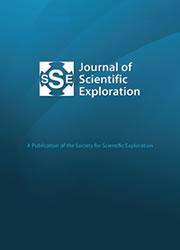Abstract
Sergio Rueda’s book Diabolical Possession and the Case Behind “The Exorcist” is a detailed case study of the real events that inspired William Peter Blatty’s 1971 novel The Exorcist (1971) and subsequent movie, released in 1973, of the same name (Blatty, 1973). The book’s connection to the popular fiction novel and the even more popular horror genre film that followed creates a prominent marketing appeal. However, to Rueda’s credit, references to Blatty’s book and movie are made judiciously throughout the text and are then relevant connections with the real case. That being said, however, there is little in the way of an actual manifestation of a demonic possession that can equal the spin that Hollywood special effects can present to theatre-goers (no pun intended). The victim of possession that Rueda describes from the actual case never has his head spin 360 degrees, nor projectile vomits green vomit, nor appears, in all it’s demonic glory, to be Satan himself. Blatty’s story, however, is highly fictionalized, and presents the “dark inner voice” we all possess as an archetypal force in the collective unconscious, in a literal, yet also metaphoric, way. The real thing is quite a bit subtler, and thus easier to sweep under the table.
The actual case that Blatty’s The Exorist is based on, and the subject of Rueda’s book, is a demonic possession case that took place in 1949 and involved a 14-year old boy named Ronald, who lived with his mother and father in Mount Rainier, Maryland, just minutes away from Washington DC. Reuda claims that this Mount Rainier case is the most documented possession case in history, and consequently the most famous. Blatty was indeed inspired by the case and based, sometimes loosely, his even more famous tome on the 1949 events. Most of Rueda’s book, and I would assume most of Blatty’s book as well, were inspired by a document Rueda calls “The Jesuit Report” which was a written narrative by several of the priests involved with the Ronald possession case. Rueda claims to have found this report, along with pertinent correspondence between J. B. Rhine, the celebrated parapsychologist who headed the Duke Parapsychology Labs at Duke University from 1935 to his retirement in 1965, and Rev. Luther Miles Schulze, one of the first witnesses to Ronald’s alleged possession. Rueda stumbled across these documents during his tenure at the Foundation for the Research on the Nature of Man, an organization the retired Rhine established in 1965. Quite an intriguing story already, and again, to Rueda’s credit, one of the most informational, and credible, foundations for his book—that and the interviews he conducts with some of the key participants, including Ronald himself, more than 50 years after the actual events.
There have been several other books, and articles, written about this case—Reuda cites a few of them throughout his book, most notably Possessed: The True Story of an Exorcism by T. B. Allen (1984).Authors retain copyright to JSE articles and share the copyright with the JSE after publication.

